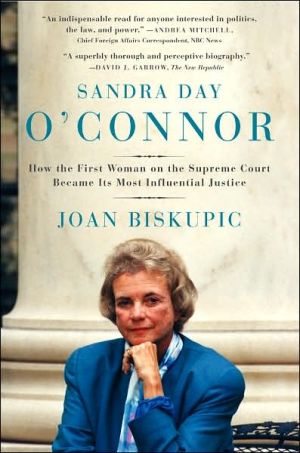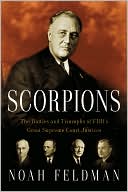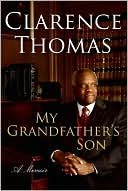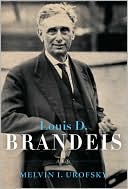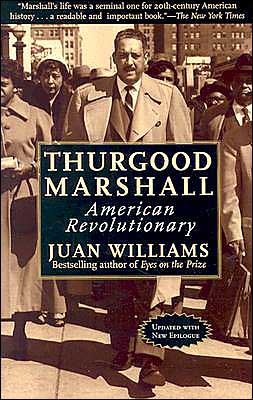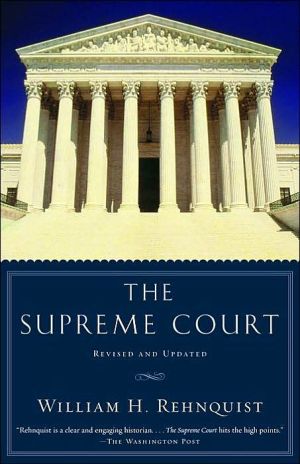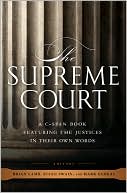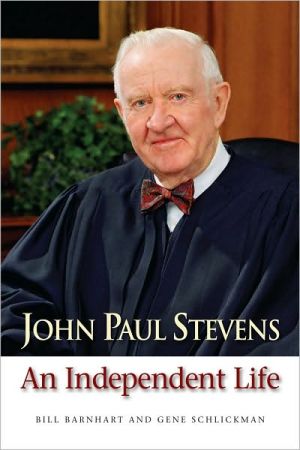Sandra Day O'Connor: How the First Woman on the Supreme Court Became Its Most Influential Justice
"Drawing on information from once-private papers of the justices, hundreds of interviews with legal and political insiders, and the insight gained from nearly two decades of covering the Supreme Court, Joan Biskupic examines O'Connor's remarkable career, providing an indepth account of her transformation from tentative jurist to confident architect of American law. The portrait that emerges is of a complex and multifaceted woman: lawyer, politician, legislator, and justice, as well as wife,...
Search in google:
Sandra Day O'Connor, America's first woman justice, was called the most powerful woman in America. She became the axis on which the Supreme Court turned, and it was often said that to gauge the direction of American law, one need look only to O'Connor's vote. Drawing on information gleaned from once-private papers, hundreds of interviews, and the insight gained from nearly two decades of covering the Supreme Court, author Joan Biskupic offers readers a fascinating portrait of a complex and multifaceted woman—lawyer, politician, legislator, and justice, as well as wife, mother, A-list society hostess, and competitive athlete. Biskupic provides an in-depth account of her transformation from tentative jurist to confident architect of American law. The Washington Post - Kathleen M. Sullivan Biskupic gives a fascinating account of O'Connor's political astuteness; she was appointed and reelected as an Arizona state senator, then rose to become majority leader of that body. Later, she became a judge on an Arizona trial court and an intermediate appeals court. Diligent, alert, energetic and adept at politicking, she was a master of the telephone call and the handwritten note, and she helped organize everything from Republican presidential campaigns in Arizona to her classmate Rehnquist's confirmation to the Supreme Court.
Sandra Day O'Connor\ How the First Woman on the Supreme Court Became Its Most Influential Justice \ \ By Joan Biskupic \ Ecco\ ISBN: 0-06-059018-1 \ \ \ Chapter One\ \ Pioneer Roots \ To ready herself for the birth of her first child, Ada Mae Day left her home on an Arizona ranch and her husband of three years. She traveled two hundred miles east, to her mother's place in El Paso, Texas, to be near a city hospital. After baby Sandra was born on March 26, 1930, at the Hotel Dieu Hospital, Harry Day came by train to see Ada Mae and his new daughter. "Although I cannot say that I feel any great parental love for Sandra yet," Harry wrote to his wife upon his return to the Lazy B, "I would like to see her and touch her again."\ Sandra was a mixed blessing for Harry. The deep passion he felt for Ada Mae was complicated by the infant, as was the burden of making a living from the dry expanse of the Lazy B. He could not abide separation from his young wife. "I wonder continually what you are doing, where you are, who you are with," he wrote to her a year after they married. "I wonder what you will be like when I see you again. Will you be changed? Somehow I am afraid you will be different." Harry's insecurities were ratcheted up by the looming Depression. Even before the arrival of this new mouth to feed, life was defined by scarcity. Too little water. Too few hands for the work to be done.\ Decades later, as a Supreme Court justice, Sandra Day O'Connor would write a nostalgically sweet memoir of her ranch childhood. In it, her father, Harry, is painted as a rugged American type, a self-taught man who would become the greatest single influence on her life. Yet, beneath the Gary Cooper of her portrayal, was a man who bequeathed a complex legacy to his children. Harry Day was harsh, demanding, and unpredictable. But Sandra left the Lazy B with a lesson in the virtues of hard work, a talent for maneuvering among tough characters, and a competitive drive that sustained her through a journey no woman had taken before.\ Harry Day was the fifth and last child of Henry Clay Day, who headed off from Vermont in the mid-1870s to make his fortune. The father, named for the Whig politician Henry Clay, had worked his family's farm in Coventry, Vermont, until 1865, when he turned 21. Then he moved west, first laboring in a general merchandise store on the Canadian border, and later opening his own building-supply business in Wichita, Kansas. There, when he was 35, he met and married Alice Edith Hilton, 18, the daughter of a rector in the Episcopal Church. With his angular New England visage, bushy mustache, and stone-faced demeanor, H. C. Day was marked by his Yankee heritage. But he also could not stay put. He constantly looked for fresh adventures and travel.\ In 1880, Day sought acreage in the newly opened public lands of the New Mexico Territory for the grazing of livestock. Down in Mexico, he bought a herd of cattle and settled on a parcel of his new land south of the Gila River, on what would become the border between New Mexico and Arizona. The Mexican cattle had been branded on the left hip with a B lying down flat - a "lazy" B. So, he named his ranch for the brand, and it endured as the Lazy B through the generations. Joining the rush for open range, H. C. Day arrived just as cattle-grazing conditions were becoming harder for ranchers. Dry spells and overstocking were quickly destroying the arid and fragile land. Cattle prices were tumbling. The pioneers were being sorely tested.\ Day hired a foreman to manage operations at the Lazy B, began taking steps to move his family to the more pleasant environs of Pasadena, California, and continued his travels, now to England and Germany. The flinty New Englander wanted to be based in California, in a promising city where the orange trees blossomed year round, but Day soon discovered that the ranch foreman was stealing from him. So, he brought his family back to the Gila River valley and the Lazy B, where he built a house and a one-room school for his children. The youngest of H. C.'s and Alice's children, Harry was born at that ranch house in 1898 and lived there until he was about 10 years old. H. C. Day, by then, had a foreman he trusted, and California continued to beckon. He moved his wife and children back to the sweetness of Pasadena. An athletic boy with an attractive smile, young Harry thrived in city schools. He won state swimming awards. So pleased was he to graduate in 1918 from Pasadena High School that he saved his fancy, typeset commencement program and high school picture until the day he died. Harry wore the trappings of city life well. In photographs from these years, Harry looks the dashing young fellow in blazer and cap. He had hopes of college and travel to exotic places.\ H. C. was preoccupied, as usual, with his business enterprises. As a father, he was more aloof than affectionate. On the other hand, Harry's mother, Alice, doted on the boy. When he was away from home, she wrote him long, worried letters about whether he had enough clothes to keep warm and whether he was taking care of himself. "Be a good boy and don't lift heavy things or do anything else to injure yourself," she wrote at one point. From both parents, Harry received a sense for business and handling financial affairs.\ Harry's dream, born in his Pasadena years, was to attend Stanford University. But as he graduated from high school, Harry was drafted for World War I. The war, however, ended before he saw any action. Then, in 1919, H. C. Day's health slipped and, as he worried about the ranch's finances, he sent Harry, the second of his two sons, to check on its operation. Harry, then 21 years old, found the land a terrible place to live, and hoped to stay at the Lazy B only long enough to make some money and then find someone else to run it....\ (Continues...)\ \ \ \ \ Excerpted from Sandra Day O'Connor by Joan Biskupic Excerpted by permission.\ All rights reserved. No part of this excerpt may be reproduced or reprinted without permission in writing from the publisher.\ Excerpts are provided by Dial-A-Book Inc. solely for the personal use of visitors to this web site. \ \
\ Emily Bazelon…if Biskupic lacks intimate confidences for Sandra Day O'Connor, she has something else: perfect timing. Her book appears as O'Connor leaves the bench and while her legacy is unsettled. Biskupic jumps into that opening with a well-researched and (no doubt to O'Connor's chagrin) revealing account.\ —The New York Times\ \ \ \ \ Kathleen M. SullivanBiskupic gives a fascinating account of O'Connor's political astuteness; she was appointed and reelected as an Arizona state senator, then rose to become majority leader of that body. Later, she became a judge on an Arizona trial court and an intermediate appeals court. Diligent, alert, energetic and adept at politicking, she was a master of the telephone call and the handwritten note, and she helped organize everything from Republican presidential campaigns in Arizona to her classmate Rehnquist's confirmation to the Supreme Court.\ — The Washington Post\ \ \ Publishers WeeklyIn the late 1980s, as the Supreme Court justices were discussing a case, Antonin Scalia ranted against affirmative action. Sandra Day O'Connor, the first and then still the only woman on the High Court, replied, "Why, Nino, how do you think I got my job?" This is one of the few revelatory moments in Biskupic's bio of the retiring O'Connor as sharp-tongued, humorous and utterly realistic. It's also, as Biskupic shows in a close study of O'Connor's jurisprudence, a bit misleading: for most of her career on the Court, the conservative O'Connor voted against affirmative action. With access to justices' once private papers, longtime court observer Biskupic, now with USA Today, sheds light on the internal workings on the Court, but not much on the internal workings of the very private O'Connor's mind and heart. Biskupic does show the justice gaining confidence and force on the Court, particularly after her fight against breast cancer in 1988. As O'Connor faces retirement, Biskupic clarifies her judicial legacy, sometimes seeing the glass as half full, sometimes as half empty: praising her lack of ideology but also noting a lack of vision in a justice who often "step[s] to the brink, and then back[s] away"-a mixed legacy that will be debated for years to come. (Nov.) Copyright 2005 Reed Business Information.\ \ \ \ \ Library JournalVeteran Supreme Court reporter Biskupic offers an insightful biography of perhaps the most influential associate justice in recent history. She cites O'Connor's frontierlike upbringing in Arizona and her ability to mingle with finesse in a male world as factors in her ascension to the de facto leadership of the Court's centrist plurality, which has swayed the majority opinion on a range of issues, including abortion, gay rights, affirmative action, and the death penalty. Biskupic underscores the nontraditional nature of O'Connor's credentials: her lack of high-level judicial experience and her brief career in the Arizona State Senate. But there were also her connections with the Republican Party and her inclination to avoid public positions on controversial topics. O'Connor was a consensus-builder and team player, but Biskupic nevertheless traces the theme of women's rights in her career-as when she exhorted President Nixon to name a woman to the Supreme Court. Once on the Court, she was frequently called on to write opinions involving sex discrimination and women's rights. On abortion, she carefully backtracked, allowing states more latitude than the approach taken by the liberals but rebuffing conservative efforts to gut abortion rights altogether. The O'Connor Court, Biskupic notes, thus moved the law-and society-in new directions. Highly recommended.-Philip Y. Blue, New York State Supreme Court Criminal Branch Law Lib., New York Copyright 2005 Reed Business Information.\ \ \ \ \ Kirkus Reviews"She was not raised to sit still," remarked a weary clerk of Sandra Day O'Connor. Indeed not, as this lively life of the just-retired Associate Justice relates. Supreme Court chronicler Biskupic writes, mostly admiringly but not unreservedly, of O'Connor, a tough but polite woman who grew up on an Arizona ranch headed by a never-pleased patriarch who, by most accounts, put the fear into everyone he met. Sandy Day was brilliant, a surprise to her classmates at Stanford Law School (including William Rehnquist, whom she briefly dated) and to hapless chauvinists in the Phoenix suburbs, to which she and her husband repaired in 1957. O'Connor served as a state legislator-a fellow senator, meaning to be complimentary, said of her, "this pretty little thing carries a disconcerting load of expertise"-and appeals-court judge before being shortlisted by Attorney General William French Smith to replace retiring Supreme Court Justice Potter Stewart in 1981. Though President Reagan had pledged to name a woman to the court, Biskupic writes, "O'Connor's credentials did not make her an obvious candidate." On closer examination, administration vetters found that she was politically well-connected and suitably conservative, though big-C rightists had fits when they discovered that O'Connor was generally pro-choice. No matter: she easily passed the audition, only to take a mostly independent course on the bench that put her at odds with doctrinaire types on the left and right alike. Biskupic does a solid job of charting O'Connor's evolution as a judge who, given her druthers, preferred to seek consensus and split the difference in a given dispute over the slash-and-burn approach of certain other jurists,notably bete noire Antonin Scalia. O'Connor shaped the law, Biskupic concludes, "with her Western pragmatism, her feel for the American center-and a shrewd but quiet negotiating skill."Fitting farewell to an influential jurist who may soon be very much missed.\ \ \ \ \ Roll Call"A valuable window into O’Connor’s operating style."\ \ \ \ \ New York Times"A fine new biography."\ \ \ \ \ St. Petersburg Times"[A] fascinating and revealing biography…. Biskupic writes clearly and without hyperbole."\ \ \ \ \ Los Angeles Times Book Review"A comprehensive narrative of O’Connor’s remarkable judicial career."\ \ \ \ \ Bloomberg News"[A] smart book…. Brisk and thorough."\ \ \ \ \ Washington Post Blog"An excellent account of Sandra Day O’Connor’s life and times as the first woman Supreme Court justice."\ \ \ \ \ Booklist"Biskupic ... draws on once-private Court documents and hundreds of interviews to offer an absorbing portrait…. [An] illuminating biography."\ \ \ \ \ Washington Post Book World"[A] highly readable and engaging work…. [A] powerful and persuasive account."\ \
